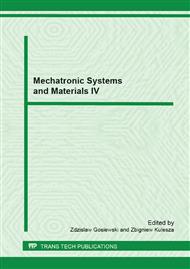p.489
p.495
p.501
p.507
p.513
p.519
p.525
p.533
p.539
Influence of Bias Current Value on Properties of Active Magnetic Bearing
Abstract:
The aim of this work is to analyze the influence of bias current value on the active magnetic bearing (AMB) performance. The numerical simulation results were compared with the experimental ones. Two variants were examined. In the first one, the bias current was set to half of its maximal value. In the second case, the bias current was equal to zero. It should be noted, that in both variants of the AMB the simple PID regulator has been assumed as a controller with constant parameters. The transients have been simulated with using field-circuit method. We obtained the characteristics of the magnetic force verso the control current and rotor position. The force has been calculated using the magnetic field analysis method [1, . The transients from the computer simulation were used for determination of the AMB stability. Thus, launch of the machine should be examined against its destruction. Both, the computer simulation results and measurement ones have shown that the AMB system can be controlled by the linear regulator without any bias current. However, lack of the bias current causes higher time of the rotor settling and increases overshoot magnitude.
Info:
Periodical:
Pages:
513-518
Citation:
Online since:
March 2013
Authors:
Price:
Сopyright:
© 2013 Trans Tech Publications Ltd. All Rights Reserved
Share:
Citation:


